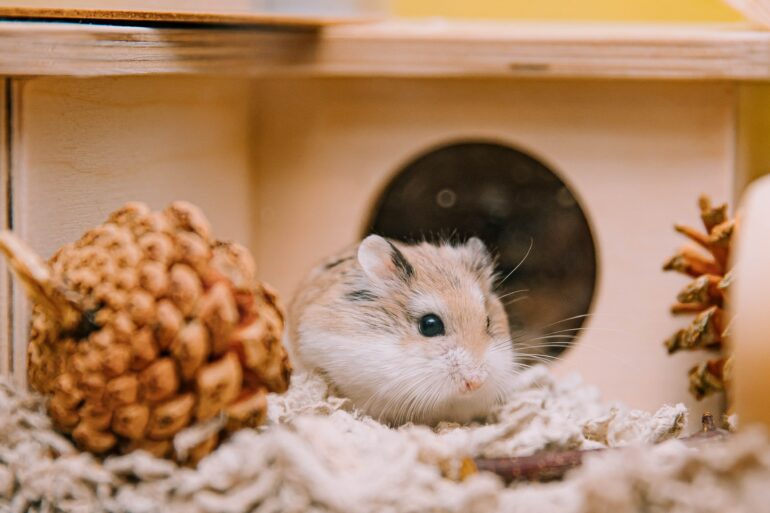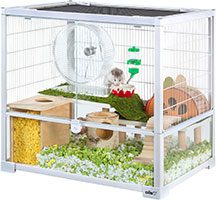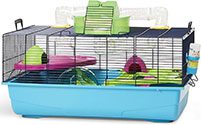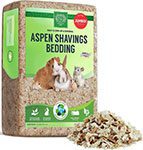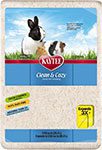Hamsters are curious, furry, round, small and fun pets to keep. They make excellent starter pets for children as long as you understand how to care for them effectively. These pets are very easy to care for and do not require much attention.
Are you planning on getting a hamster pet? Below is a comprehensive guide to caring for hamsters and everything you should know before getting a pet hamster.
What Are the Most Popular Hamster Breeds?
One thing that you should know before getting a pet hamster is that several hamster breeds are available. Some of the most popular hamster breeds include the following:
- Syrian hamster. The Syrian hamster is the easiest breed to keep. They are less likely to bite and very easy to tame. These pets can be incredibly territorial if placed in the same cage as other hamsters.
- Dwarf Roborovskis. This hamster is one of the smallest hamster breeds available. Their small body makes them very quick-moving and incredibly active. Thus, this dwarf hamster needs a lot of toys in their cage.
- Campbell's Dwarf Russian. The Campbell's Dwarf Russian hamster can easily bite if frightened or threatened. However, they are friendly and allow you to hold them if you do it correctly.
- Chinese hamsters. Chinese hamsters are very friendly pets and love to play a lot. Their playful and active nature makes them need more attention.
- Dwarf Winter White Russian. These hamsters also go by the name Siberian hamsters. They are excellent pets to keep and are quick movers. These hamsters can easily squirm out of your hands when holding them; thus, they require special handling.
How To Choose a Hamster?
In a hamster pet store, you will find that there are several hamsters available. However, not all hamsters are in optimal health. If this is your first time keeping a hamster, getting a healthy one should be one of your main priorities. Some of the top things to watch out for include:
- Activity level of the hamsters—active hamsters signify healthy pets.
- Watery eyes—this symptom acts as a sign of an unhealthy pet.
- Hamster cage with several sick hamsters—hamster diseases are often contagious. Buying from such a cage can be risky as you can take home a sick pet.
What Are the Best Hamster Cage Requirements?
Hamsters require a safe home where they can explore, be happy and feel comfortable. Thus, the type of cage you purchase should be easy to clean, secure, keep properly ventilated and have enough space for your hamster to play and move.
The minimum hamster cage size should be at least 100cm x 50cm x 50cm. One thing to note is that if you purchase a small cage, your hamster will often not be happy. A small cage also does not facilitate good health.
In addition to the hamster cage size, the type of cage you purchase for your hamster is a vital aspect of the care process. Generally, the best cages for hamsters are glass, wire or plastic. Some of the top-rated cages available include the following:
- Savic Hamster Heaven Metro Cage. This cage is extra-large and allows you to create a perfect home for your pet. It has two feeding bowls, a toilet, two houses, two feeding bowls, exercise wheels and tunnels.
- Kaytee CritterTrail Super Hamster Habitat. This cage is 30 inches long, 18 inches wide and 16.5 inches high and is very easy to clean. It is perfect for keeping one hamster.
- ROBUD Large Hamster Cage. This cage is a haven habitat for hamsters. It has proper ventilation, a safe living space and encourages easy cleaning. The cage is 5 inches long, 11.8 inches wide and 11.8 inches high. Thus, it offers plenty of room for your hamster to play and move.
What Is the Best Hamster Bedding?
Hamsters require a clean, quiet, dry and comfortable place. This pet's natural habitat in the wild is warm and dry. Thus, avoid damp or humid conditions. In addition, hamsters need absorbent and soft bedding.
The wrong bedding type can have adverse effects on the hamster's health. For instance, sawdust and wood shavings can cause the hamster's airways to block. They are also harmful to the skin and can cause allergic reactions.
Some safe bedding materials you can have in your hamster's cage are tissue paper, cardboard, shredded paper, aspen shavings and hemp bedding. The best commercially-available hamster beddings for your hamster include the following:
- Small Pet Select Premium Natural Aspen Bedding
- Kaytee Small Animal Bedding
- So Phresh Natural Aspen Bedding
- Carefresh Natural Small Pet Bedding
Apart from wood shavings and sawdust, other beddings that you should avoid include; cotton wool, scented bedding and fluffy bedding
What Are the Best Cage Accessories for Your Hamster?
Hamsters are generally very active animals. If you provide them with the right accessories, they will require less attention. In the cage, make sure you have the following:
- Card or plastic tubes and tunnels for nesting and hiding opportunities
- Card boxes
- Ladders and ropes, especially if you want to keep Syrian hamsters
- Exercise wheels
- Shallow litter trays
- Hammocks
- Plastic tubs
- Chew toys
- Food dish
- Water bottle
Keep in mind that these pets love to chew on objects like cardboard and wood. Thus, most of the items in the cage may not last long.
What Is the Best Hamster Diet?
Hamsters feed on a mixture of insect larvae, cereals, seeds and large insects like crickets in the wild. Therefore, the best diet for a hamster in captivity should be varied, balanced, good quality and contain all vital minerals and nutrients.
Make sure to provide your pet with a mixture of various seeds or a compounded pellet ration. Also, offer them greens like squash, peas, romaine, kale and parsley. Ensure that you provide the greens daily but in small quantities. Rhubarb and grapes can be poisonous to rodents, so avoid them. Generally, your hamster diet should comprise 5% treats, 20% veggies, fruits and greens and 75% fortified pellets.
Remember to supply daily clean and fresh water from a bottle. Also, clean the bottle regularly and check for blockages or leaks.
Another vital thing that you should do as a hamster owner is to monitor their diet constantly. Talk to your vet if you notice that your hamster is eating less, their hindquarters are soiled and their droppings are moist. Also, do not give your hamster stale food or have sudden diet changes. These changes can cause your pet to have an upset stomach.
Bottom Line
Hamsters are very easy pets to keep. However, they require you to know what is best for them and what is not. Foods, such as grapes, can be poisonous to hamsters, while bedding like wood shavings can cause blocked airways. If you intend to keep hamsters, prioritize the do's and don'ts of keeping these furry animals.

